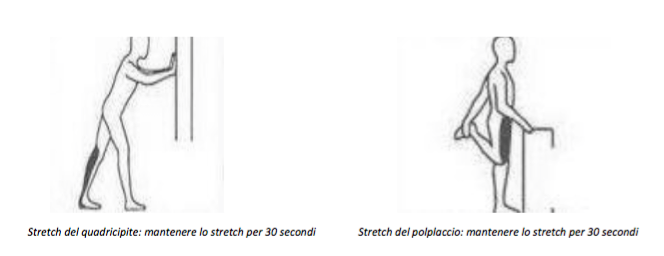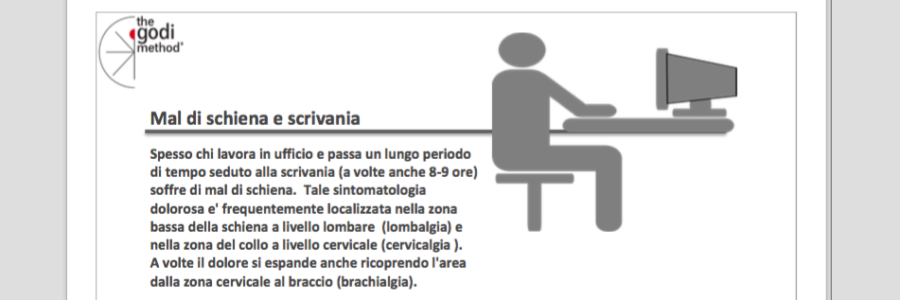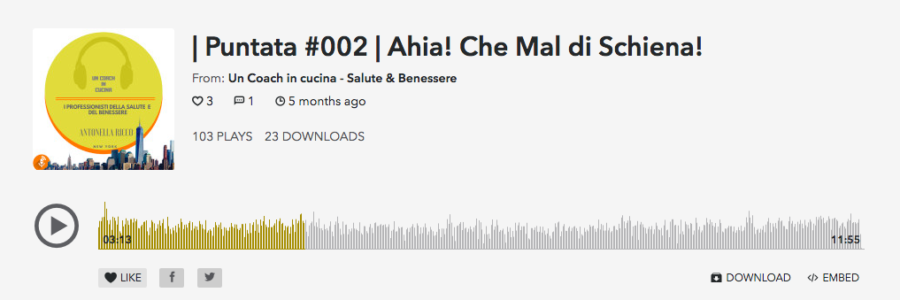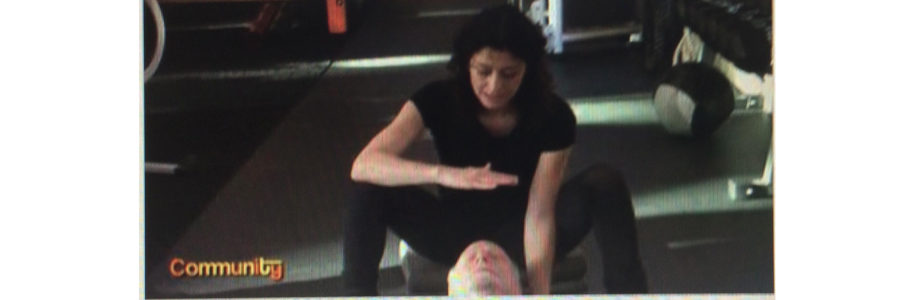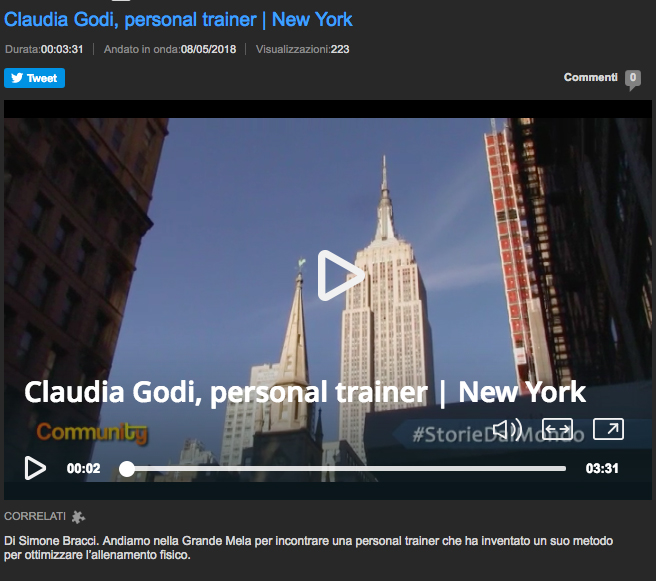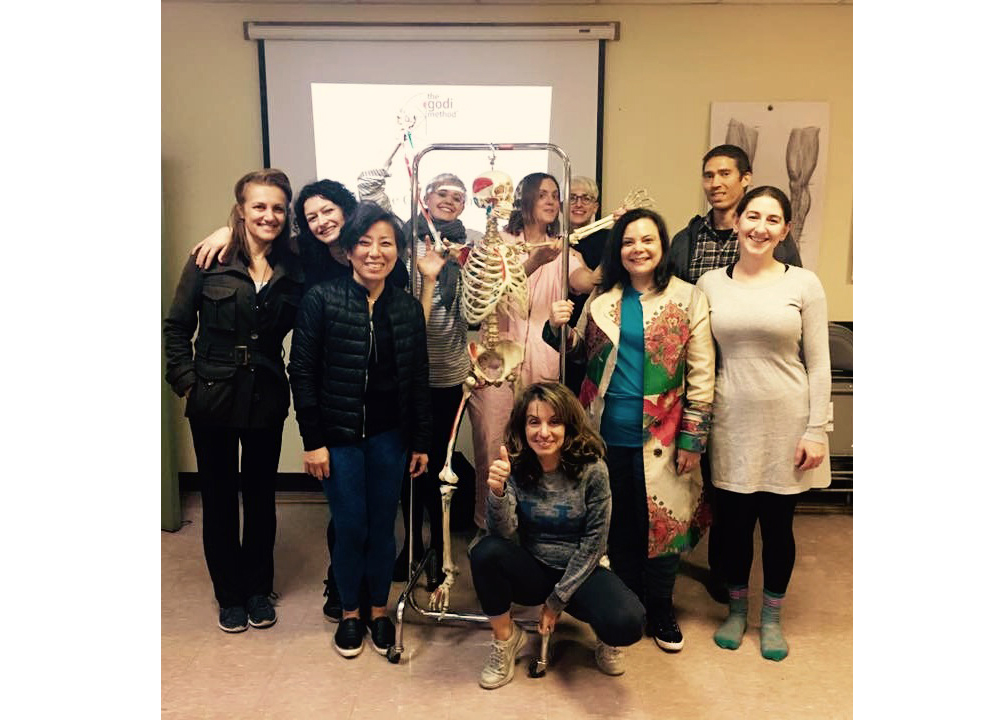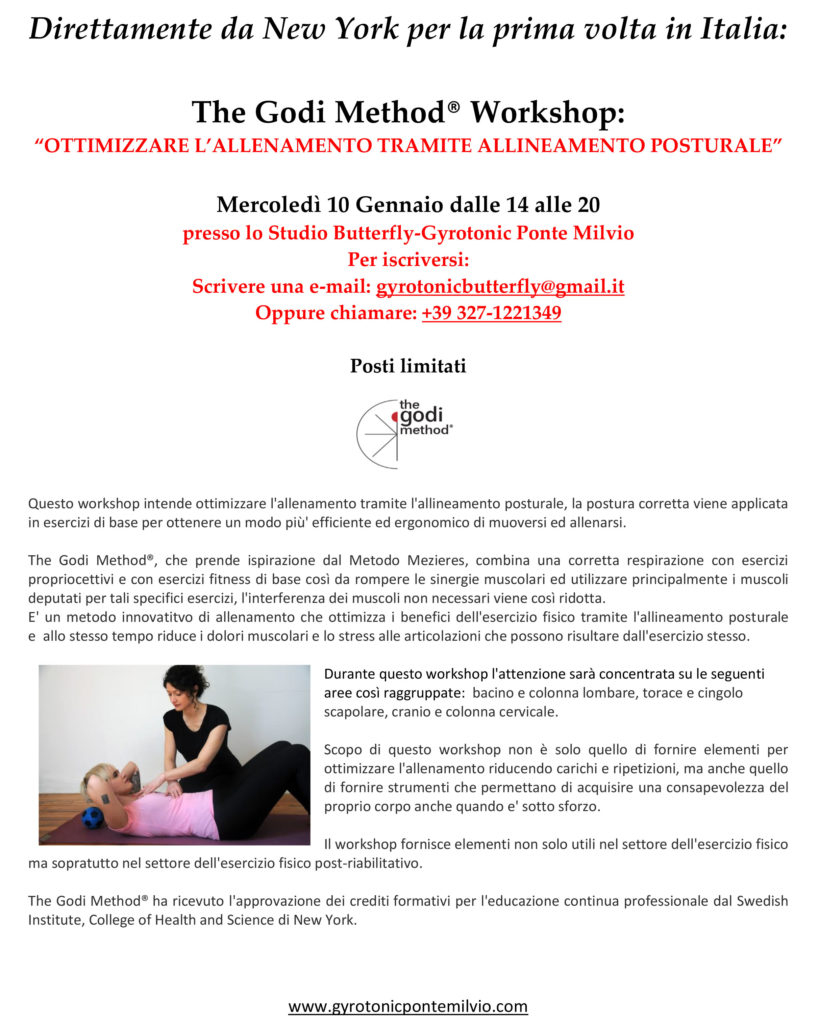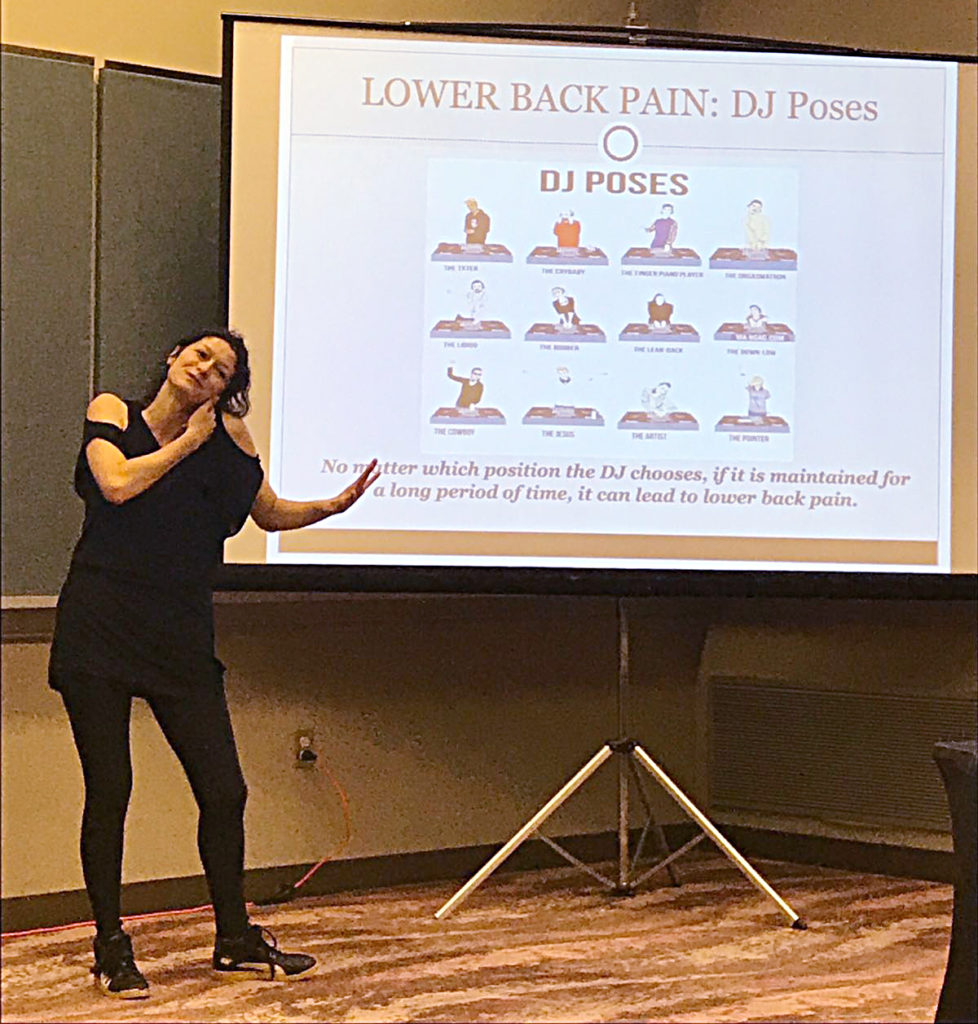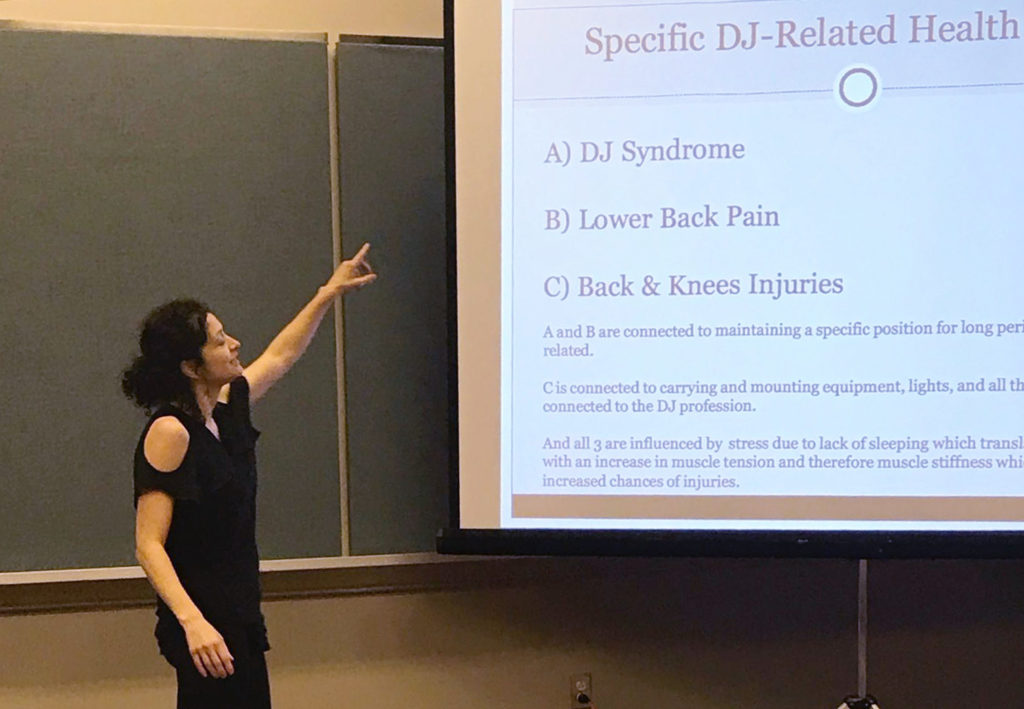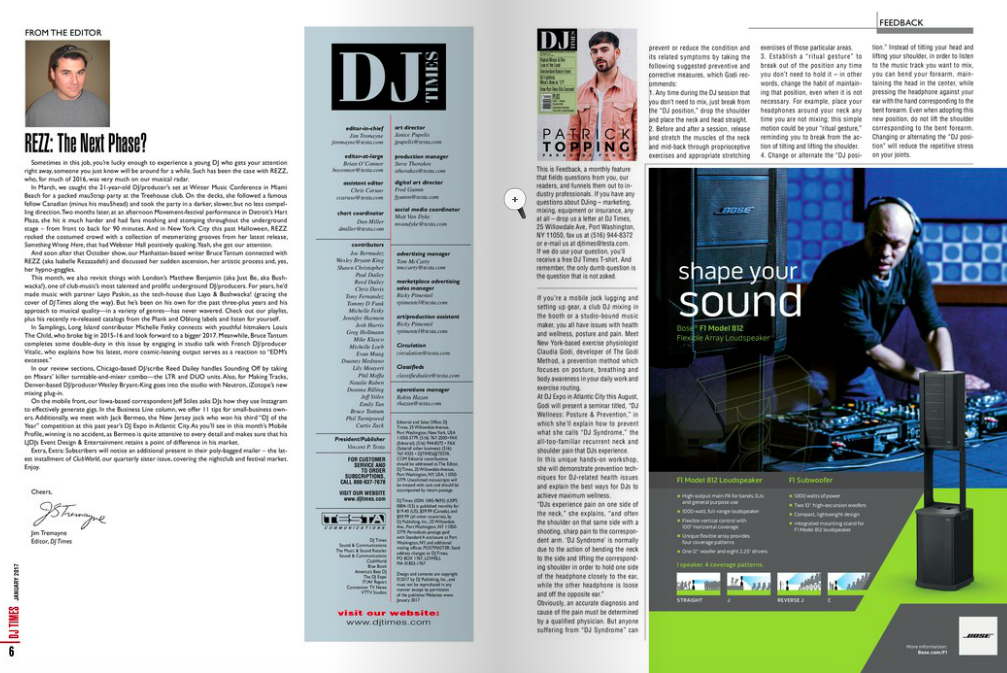Below an Italian article I wrote on back pain related to office work.
In this article you can also find some useful tips on how to modify your daily routine at the office and some simple exercises aimed to prevent and reduce back pain during office work.
Mal di schiena e scrivania
Spesso chi lavora in ufficio e passa un lungo periodo di tempo seduto alla scrivania (a volte anche 8-9 ore) soffre di mal di schiena. Tale sintomatologia dolorosa e’ frequentemente localizzata nella zona bassa della schiena a livello lombare (lombalgia) e nella zona del collo a livello cervicale (cervicalgia).
A volte il dolore si espande anche ricoprendo l’area dalla zona cervicale al braccio (brachialgia).
Le cause del “mal di schiena da ufficio” sono molteplici e fra le principali sicuramente vi sono:
1) Staticita’
2) Mantenimento per un lungo periodo di tempo di posizini che aggravano la colonna
vertebrale.
Per ridurre il “mal di schiena da ufficio” e’ consigliabile adottare queste possibili soluzioni:
1) Alzarsi ogni 30 minuti.
Per far si che cio’ avvenga si possono utilizzare diversi espedienti:
a) posizionare la stampante lontana dalla scrivania
b) Posizionare il cellulare/ telefono lontano dalla scrivania
c) Programmare sul cellulare un allarme che suoni ogni 30 minuti
d) Non consumare alcun pasto seduti alla scrivania
2) Adottare una postura seduta ideale che gravi il meno possibile sulla colonna vertebrale.
Ovviamente la postura seduta ideale costituisce una postura di orientamento a cui ciascun individuo fara’ riferimento adattandola in modo che rispetti la propria morfologia corporea e le proprie necessita’ individuali.
Caratteristiche di una postura seduta ideale:
a) regolare la seduta in modo che l’angolo tronco – arti inferiori sia di 90 gradi (puo’ essere utile
l’ utilizzo di un cuscino fatto a piano inclinato sopra il sedile)
b) regolare lo schienale in modo che le spalle siano sulla stessa linea del bacino ( una volta
assicurata la linearita’ delle spalle sul bacino si possono aggiungere cuscini, rolli- in modo che la
schiena possa rilassarsi )
c) regolare il braccioli in modo che l’angolo fra braccio e avambraccio sia di 90 gradi. Inoltre e’
consigliabile regolare anche l’altezza della scrivania in modo che i braccioli costituiscano un
prolungamento della scrivania. Questo permette di utilizzare la tastiera mantenedo una
posizione degli arti superiori piu’ rilassata .
d) e’ consigliabile l’utilizzo di una sedia ergonomica che faciliti tutti questi tipi di aggiustamenti
per il raggiungimento della propria postura seduta ideale
3) Posizionare il Monitor all’altezza degli occhi e in posizione centrale rispetto al corpo
Spesso i monitor sono posizionati troppo in alto per cui lo sguardo e’ rivolto verso il soffitto,oppure troppo in basso per cui lo sguardo e’ rivolto verso il pavimento. Oppure il monitor viene posizionato lateralmente al corpo per cui passiamo molto tempo con il corpo orientato centralmente e la testa e il collo ruotata lateralmente. Queste posizioni se mantenute per un lungo periodo di tempo sono le principali fonti di dolori al collo e conseguentemente al resto della colonna.
E’ quindi consigliabile:
a) Posizionare il Monitor all’ altezza degli occhi
b) Posizionare il Monitor centralmente al corpo
Tastiera e Mouse e Tendiniti
Spesso scriviamo sulla tastiera del computer ruotando le mani all’ interno o all’esterno ( intra e extra -rotazione) oppure utilizziamo il mouse in maniera scorretta . La ripetizione continua di questi gesti può portare a tendiniti della mano e del polso e spesso a epicondilite laterale (quest’ultima a causa di un ripetuto e scorretto uso del mouse ) dovuta al sovraccarico dei muscoli estensori del polso e delle dita. La sintomatologia più frequentemente correlata all’epicondilite laterale e’ un dolore sulla parte laterale del gomito.
Per ridurre l’incidenza di tendiniti e epicondilite e’ opportuno seguire queste indicazioni:
A) posizionare le mani parallele quando scriviamo sulla tastiera
B) Utilizzare un MOUSE PAD ovvero un piano di supporto per il mouse in modo che il polso possa essere sostenuto.
Se possibile posizionare anche il bracciolo alla stessa altezza del mouse pad in modo che si mantenga la linea continua del polso con avambraccio.
Standing Desk Una Soluzione?
Per standing desk si intende scrivanie la cui altezza e’ regolabile . Queste postazioni permettono quindi variare la posizione di lavoro da seduta ad eretta. Se utilizzate con questo intento possono essere utili per ridurre la staticità da ufficio. Si consiglia quindi di variare l’altezza del desk passando dalla posizione seduta a quella eretta ogni mezz’ora, oppure almeno ogni ora, massimo due ore. Se invece le standing desk vengono utilizzate per mantenere la posizione eretta in sostituzione alla posizione seduta, non sono di alcun vantaggio nella riduzione del “mal di schiena da ufficio” in quanto non interrompono il ciclo della staticità.
Qui sotto alcuni semplici esercizi di stretching e mobilizzazione che potete effettuare durante l’orario di ufficio.
Esercizi alla scrivania in posizione seduta:
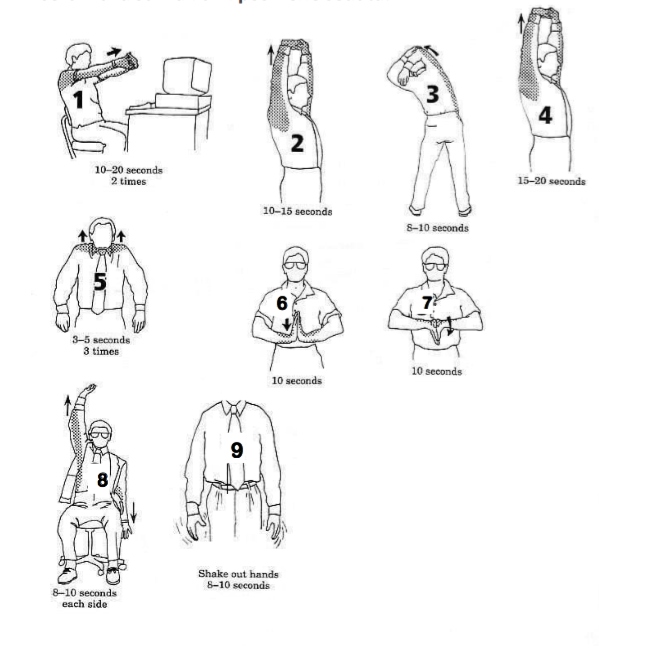
Esercizi alla scrivania in posizione eretta:
